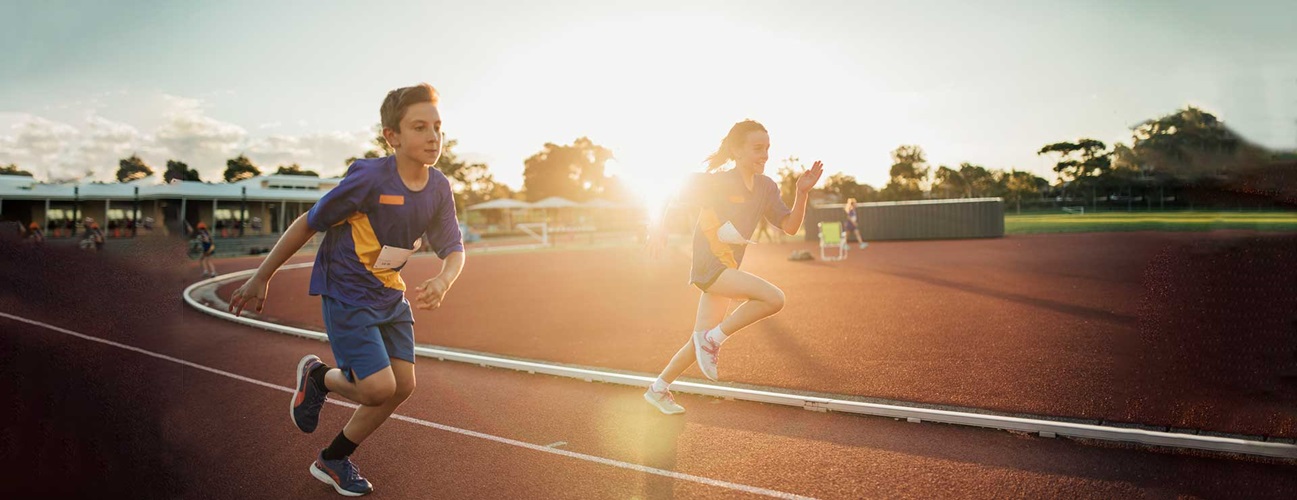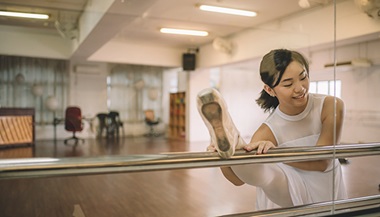10 Tips for Preventing Sports Injuries in Kids and Teens
With sports camps and more structured activities, kids today are increasingly likely to play their chosen sport year-round. But more time on the field brings a greater risk of experiencing sports-related injuries, including ACL and meniscus injuries in the knee, or injuries to the labrum or UCL in the shoulder and elbow.
Pediatric sports medicine expert R. Jay Lee, M.D. provides these 10 injury prevention tips to help keep your young athlete on the field rather than on the sidelines:
Talk with your young athlete.
Make sure your young athlete understands that he or she should talk with you and seek help if experiencing pain or something that just doesn’t feel right. “In my practice, I always promote participating in pain-free sports and activities,” says Dr. Lee. “But some kids are tough and just push through pain, which can lead to a more serious condition that could have been prevented with early intervention.”
Get a preseason physical.
A preseason or back-to-school physical is a great way to determine if your young athlete is fit to play. “Sports physicals help assess any areas of concern for athletes before they start an activity, and in turn keeps them from further injuring themselves during play if a condition is present and needs to be treated,” says Dr. Lee.
Encourage cross-training and a variety of sports.
“I see kids today who play on two baseball or lacrosse teams on the same day or throughout the week and year. But it’s important for athletes to change the sports or activities they are doing so they are not continuously putting stress on the same muscles and joints,” warns Dr. Lee. Parents should consider limiting the number of teams their athlete is on at any given time and changing up the routine regularly so that the same muscles are not continuously overused.
Stress the importance of warming up.
Stretching is an important prevention technique that should become a habit for all athletes before starting an activity or sport. Dr. Lee suggests a mix of both static and dynamic stretching during warmups to help loosen the muscles and prepare them for play. Toe touches and stretches, where you hold the position for a certain amount of time, are considered static, while jumping jacks and stretches, where the body continues to move during stretching, are considered dynamic.
Make sure they rest.
Athletes of all ages need to rest between practices, games and events. A lack of sleep and muscle fatigue predispose an athlete to injury, says Lee. In fact, the most common injuries seen in young athletes are overuse injuries — too many sports and not enough rest. Along these same lines, parents should also plan an offseason for their athlete, giving him or her adequate time to recuperate before the next season.
Provide a healthy, well-balanced diet.
It’s important for athletes to eat a well-balanced diet full of fruits, vegetables and lean proteins, and to maintain a regular eating schedule. For instance, have breakfast, lunch and dinner around the same time each day. “In sports like wrestling, where extra importance is put on an athlete’s weight, parents also need to make sure their athletes are following safe eating habits,” says Dr. Lee.
Emphasize hydration.
Heat-related illness is a real concern for athletes, especially during hot and humid days. Parents should make sure their children have adequate water before, during and after play, and watch for any signs of a heat-related illness, including fatigue, nausea, vomiting, confusion or fainting.
Get the proper equipment.
Protective equipment, like helmets, pads and shoes, are very important for injury prevention. Parents should talk with coaches before the season starts so that they have adequate time to properly outfit their child before practices begin.
Emphasize proper technique and guidelines.
In every sport, there is a correct way and a wrong way of doing things. For example, football players should be taught the proper way to tackle an opponent to avoid a concussion, and baseball players should be taught the proper way to throw and follow the guidelines on how many throws to make in a day. “I often hear from parents that they’ve followed the guidelines,” says Dr. Lee, “except for that one time.” Unfortunately, that one time is all your athlete needs for a shoulder injury to happen.
Recognize injury and get help early.
“I’ve seen a number of young athletes who have serious injuries and didn’t do anything about them, and now the damage has progressed,” Dr. Lee warns. “We need to get these kids in to see a doctor earlier to keep this from happening.”
If parents notice that there is a change in their athlete’s technique, such as a limp when running, throwing differently or rubbing a leg during activity, they should pull the athlete out of play. If the problems persist, parents should seek an assessment for their child prior to returning to the activity.
Dr. Lee warns: “Athletes will alter the way they do things because of pain, but then they can end up with a more serious injury because of it.”
When to see a doctor for your sports-related injury:
- Consistent pain during or after sports
- Persistent or new swelling around a joint
- Recurrent instability - joints "give way"
- Painful pops (nonpainful pops are OK)
- Pain that does not respond to a period of rest





